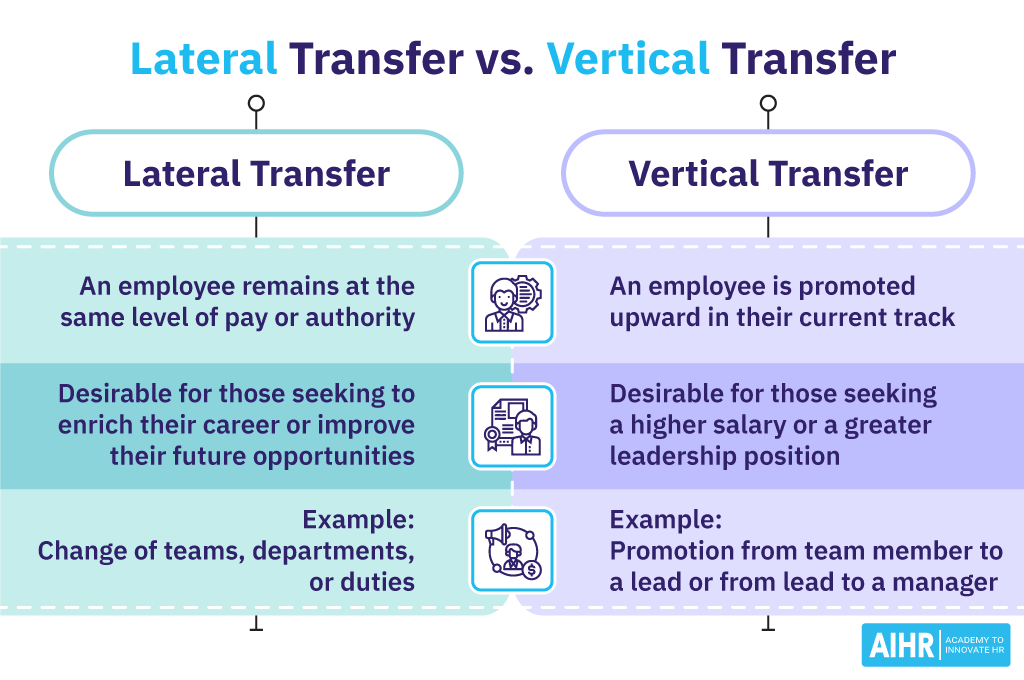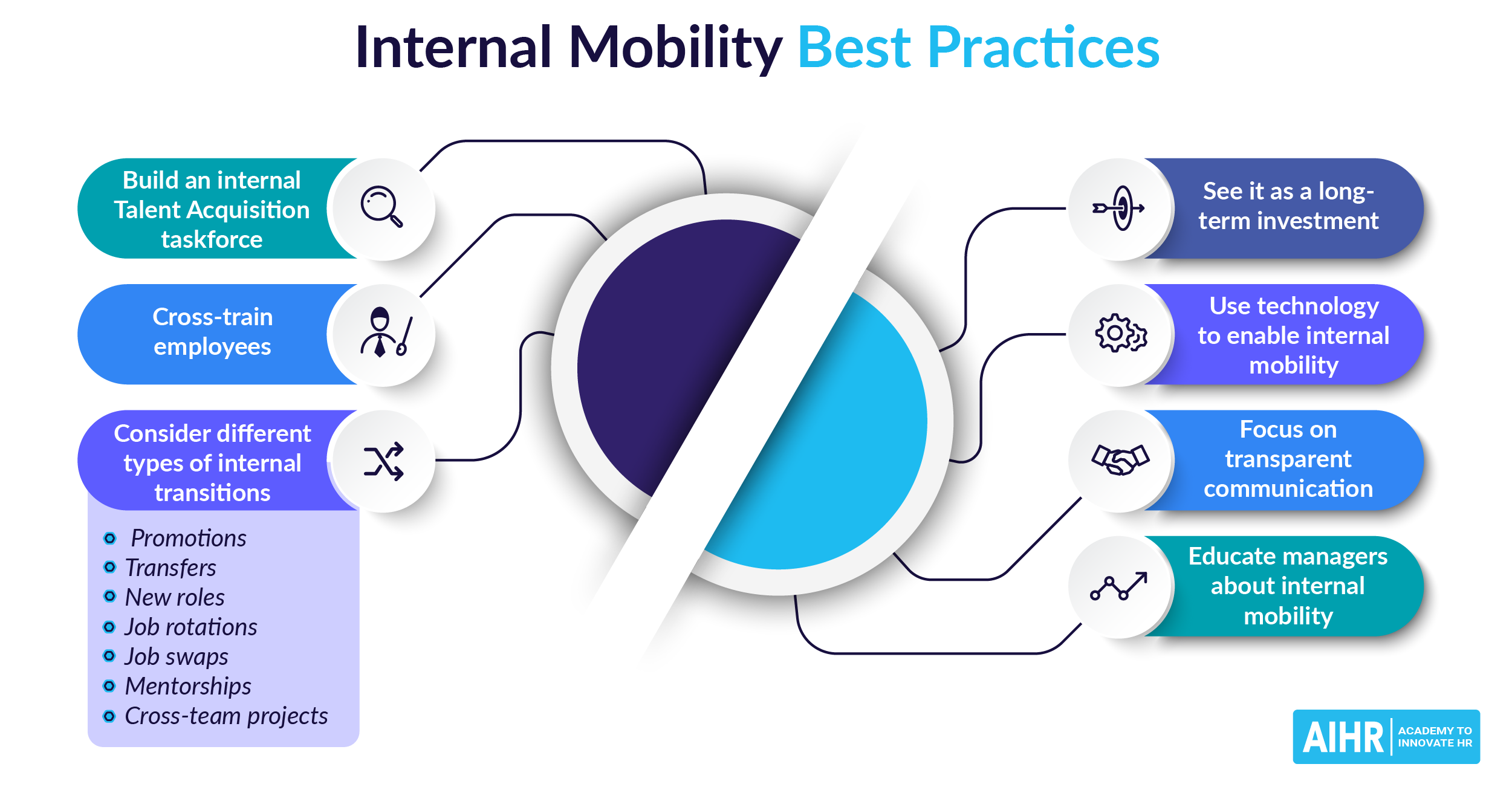Lateral Transfer
Later transfer meaning
A lateral transfer is when an employee moves to a new role within their company without changing pay grade or authority level. Unlike a promotion, a lateral move involves a sideways shift or transfer.
This type of transfer can provide opportunities for cross-training and potentially lead to a position with greater upward mobility in the future.
Lateral transfer vs. vertical transfer
Internal transfers within a company can be either vertical or lateral. A vertical transfer means upward promotion within the same track, while a lateral move involves staying at the same level of pay or authority but changing teams, departments, or roles.
Vertical moves generally offer higher salaries or leadership positions, while lateral transfers can provide career enrichment and future opportunities.

Examples of a lateral transfer
There are many examples of lateral transfers to explore. Here are four examples:
- An HR specialist in the recruitment team transitions to Learning and Development
- A member of the marketing team transitions to customer experience development
- A project assistant transfers to a medical office assistant
- A sales specialist transfers to personal account management
In each of these examples, the lateral move gives the employee an opportunity to use their existing skills in a new role while gaining new skills and working on new tasks that will broaden their professional experience.
Benefits of lateral transfer for the organization
- Enhanced skill diversity – Employees who engage in cross-training and lateral transfers to other units or departments acquire new skills, increasing their value to the organization.
- Increased employee engagement – Employees who have the opportunity to work on various tasks and projects tend to remain engaged for longer compared to those who repeatedly perform the same tasks over the years.
- Talent retention – Employees who want to learn and grow are more likely to stay with the company, especially when lateral opportunities for development are available.
- Succession planning – Offer an excellent opportunity to train key employees to assume leadership roles and run entire departments based on their practical experience.
- Resolving conflicts – This can be an effective strategy to mitigate conflicts between team members by breaking up negative interactions and facilitating a fresh start.
- Blended expertise in each work unit – By promoting cross-training and lateral transfers, work units benefit from diverse skills and perspectives.
- Reduced hiring costs – Lateral hires can help fill internal roles more quickly, reducing the need for external recruitment.
Challenges of lateral transfer
- Skills mismatch – Not all lateral transfers succeed if the skills or talents aren’t a match for the role.
- Immediate transitions – Transferred employees must quickly adapt to the new role and transfer knowledge effectively to ensure a smooth transition.
- Potential resentment – Employees who do not request a lateral transfer may view it as a lack of career advancement or an unwanted disruption.
The process of lateral transfer
When embarking on a lateral transfer, it’s essential to plan the steps to ensure a successful transition process for the employee, their origin team, and their target team.
- Identify opportunities: Determine which roles are suitable for cross-training and share transferable skills.
- Select potential candidates: Consider employees with the skills, ambition, or interests that make them good candidates for specific lateral transfers from one role to another.
- Prepare employees: Help employees understand what the lateral transfer will entail and ensure they are interested in the change. Review the new job duties, schedule changes, and other relevant details.
- Define the new position: Define the requirements, responsibilities, and reporting relationships for the new role or familiarize the employee with the existing role they are stepping into.
- Communicate the transfer to relevant stakeholders: Make sure that the employee, their old manager, their new manager, and other connected stakeholders are fully aware of the transfer taking place. Don’t forget to alert IT for an update on authorizations and permissions.
- Facilitate the transition: Set a transition day or plan a progressive transition from one role to the next. Prepare and provide any onboarding needed as the employee enters the new role.
- Monitor and evaluate the employee’s performance: Make sure the transferred employee is settling into their new role and becoming a valuable team member.
- Collect feedback on the transfer success: Check in with the employee and their leadership for feedback on the transfer and how the process could be improved.







